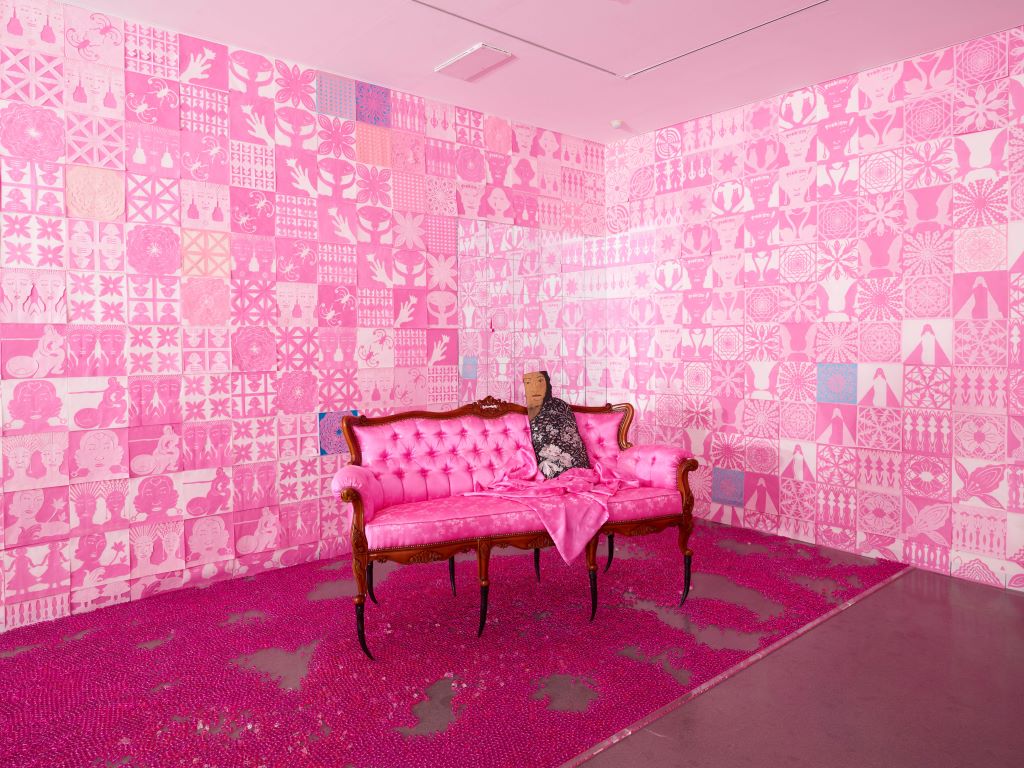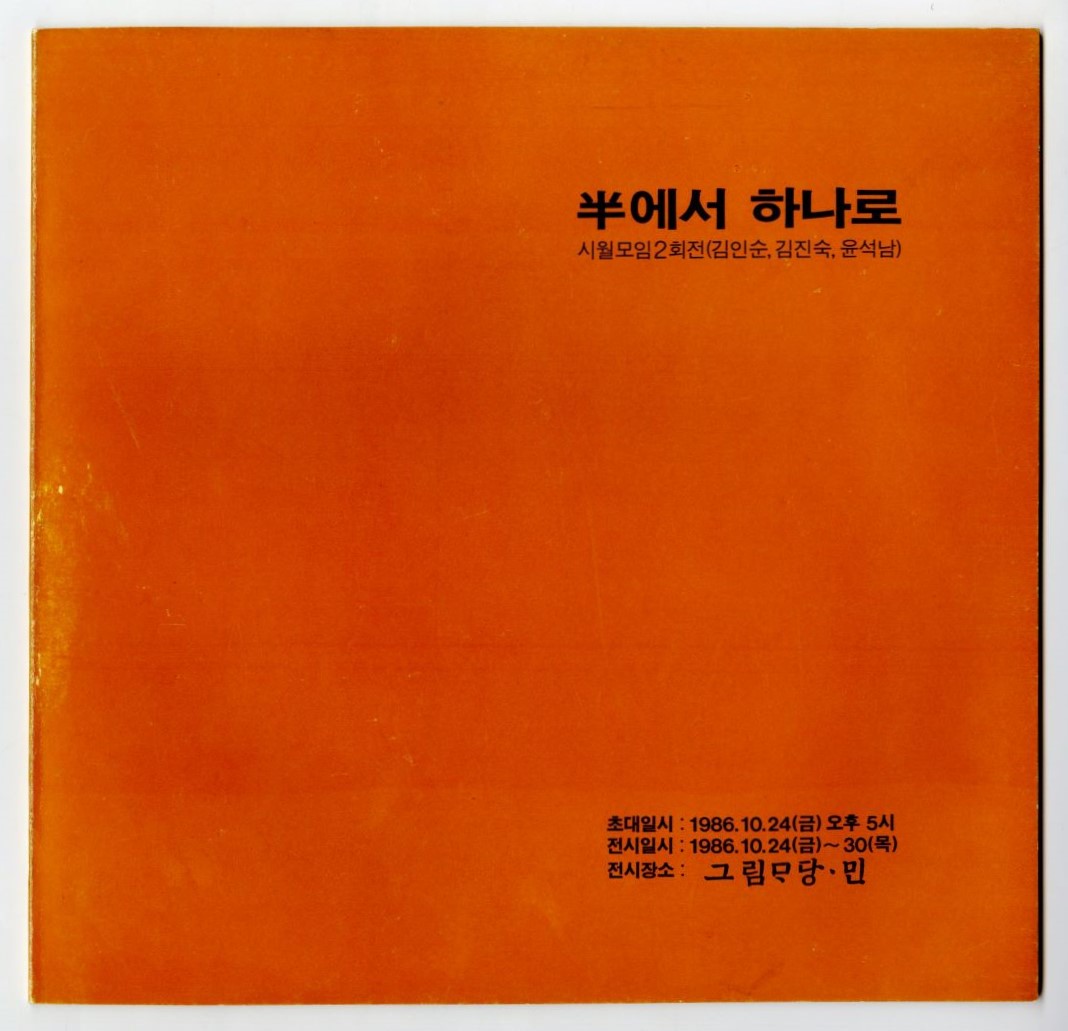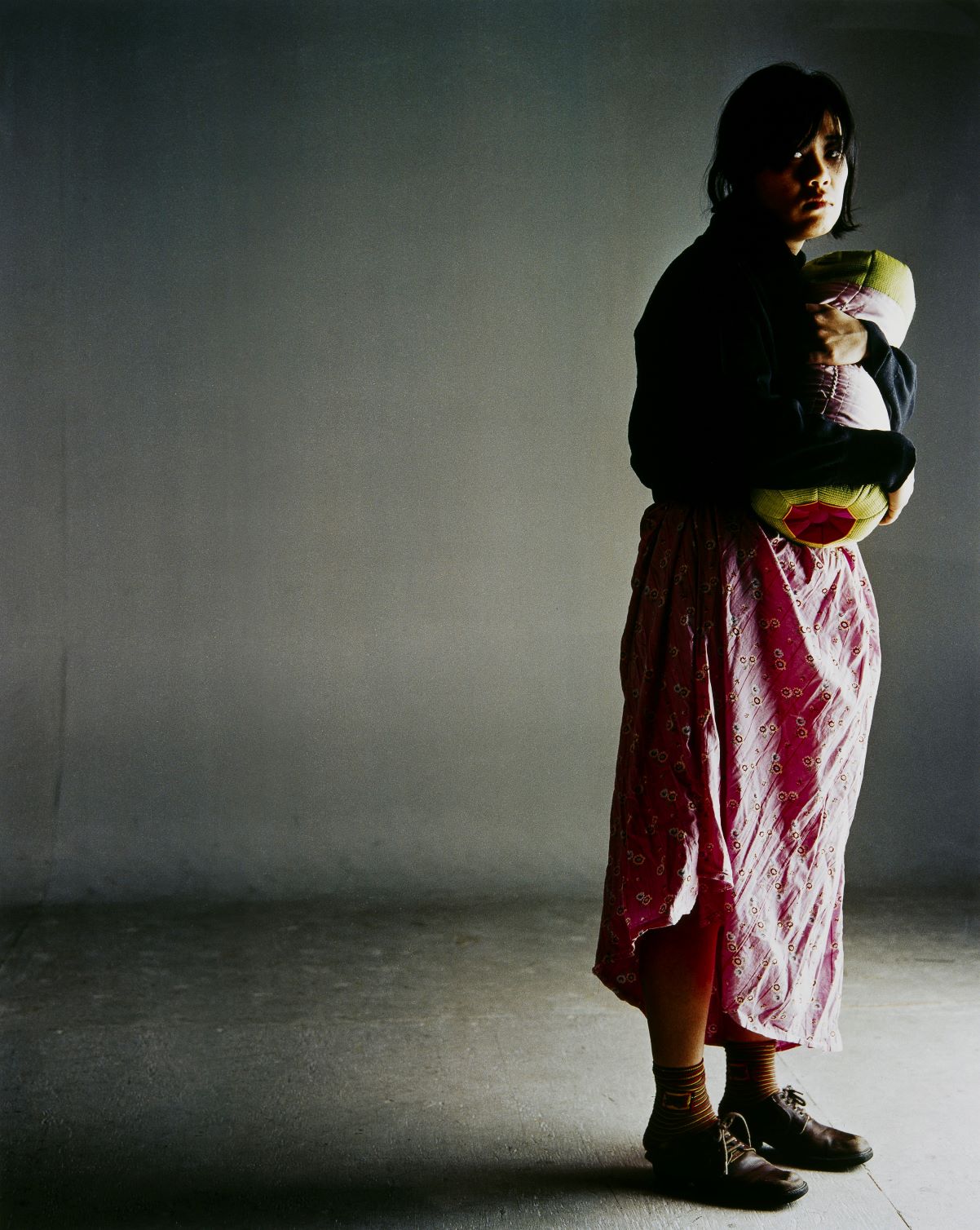
Yun Suknam, Pink RoomV, 1996-2018, 3 Seater sofa, mirror, wooden figure decorated with mother-of-pearl, satin beads, origami paper, Dimensions variable. MMCA collection
Feminism
* Source: Multilingual Glossary of Korean Art. Korea Arts Management Service
Related
-

October Gathering, From Half to Whole
The second exhibition of the October Gathering [Siwol Moim], which was held in 1986 at Min Art Gallery [Geurim Madang Min]. The October Gathering was an art organization formed in 1985 by Kim Insoon, Kim Djin-suk, and Yun Suknam. The inaugural exhibition was held at the Kwanhoon Gallery. Unlike the inaugural exhibition, which explored the subject of of laborers and farmers, the second exhibition featured works such as Kim Insoon’s Good Wife and Wise Mother, Kim Djin-suk’s Camomile, and Yun Suknam’s Even I Had Ten Hands. In doing so, the exhibition explored the oppression and discrimination common to many women within Korean patriarchal society. This exhibition is seen as the first organized attempt in the Korean contemporary art scene to foreground a feminist perspective.
-

National Art Association
An art association established in November 1985 by a collective of grassroots artists, and often also referred to as Minmihyeop. The association sought to organize artists and groups who represented the different movements within Minjung Art and to represent their varied ideas and interests. In 1995, the original association was reformed into the National Korean People’s Artists Association [Jeonguk minjok misurin yeonhap]. In turn, this was the predecessor of the Korean People’s Artists Association [Minjok misurin hyeophoe], a corporation founded in 2000.
-

Feminist art
Feminist Art refers to any art practice conducted with a feminine consciousness and gender equality awareness. Emerging in the 1970s in the West and in the 1980s in South Korea, Feminist Art is mainly themed around awareness of gender-discriminatory culture, feminine sensibility, and femininity, all of which have been explored by feminist artists. Feminist Art has become a revolutionary force in expanding the definition of art by incorporating new media and perspectives into established art. It was also applied to a variety of fields, including painting, performance, photography, installation, new media, film, and craft. Korean Feminist Art came into being in the mid-1980s by female Minjung artists, such as Kim Insoon, Kim Djin-suk, Yun Suknam, Park Youngsook, and Jung Jungyeob. From the 1990s onward, it evolved with a new generation of artists, including Lee Bul, ium, and Ahn Pilyun, who were influenced by postmodern culture, as main figures. A curator and administrator, Kim Hong-hee organized several exhibitions such as Women, the Difference and Power held in 1994, provided direction for Feminist Art through her research publications including Women and Art (Seoul: Noonbit, 2003), and discovered young artists. The most prominent Feminist artists in the 1990s were Yun Suknam, Park Youngsook, and Lee Bul. Young Feminist artists, who have been leading Feminist Art since the 2000s, include Song Sanghee, Yang Haegue, Chang Jia, and siren eun young jung. Ipgim, a feminist art collective that has been committed to social activism and artistic practices, organized seven of its own projects from 2000 through 2006.






